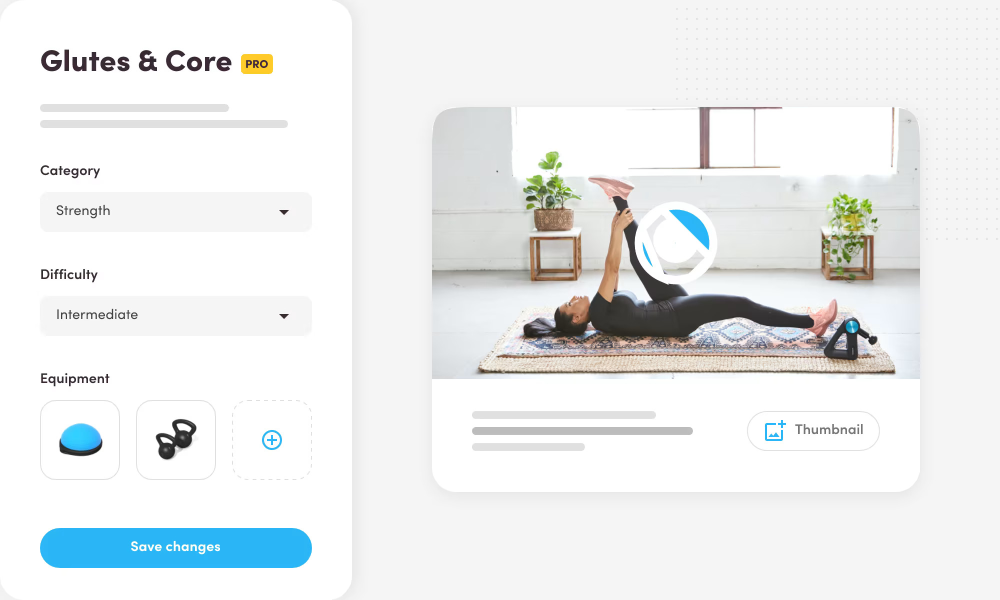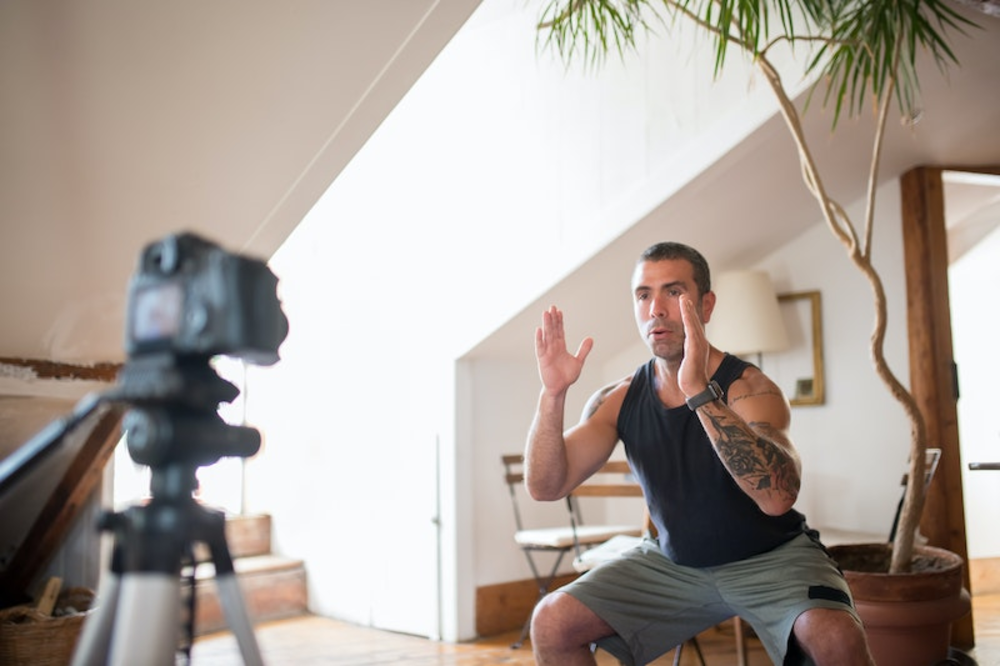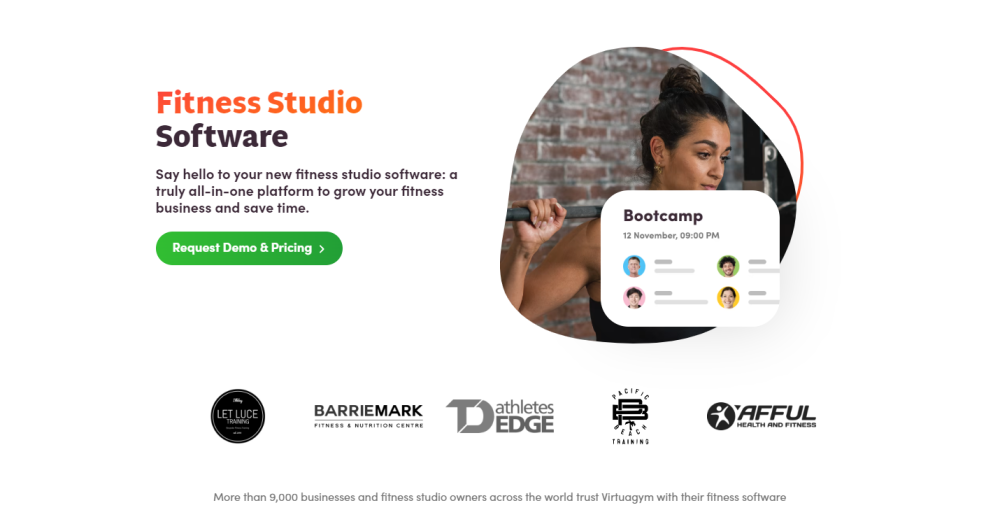As an entrepreneur, you know that to keep your boutique studios running well in the long run, you need to increase your revenue every year.
Let’s face it, the costs of running a business, like rent, utilities, equipment maintenance, electricity, heating or air conditioning, and staff salaries, always go up, never down.
So, what should you do to keep up or, better yet, get ahead of these rising costs?
The answer is to find new ways to boost your overall revenue.
Indeed, you can’t put all your eggs in one basket.
For example, if your fitness studio’s or specialty is personal training, you can’t just rely on this one source of income.
You need multiple ways to make money to run a profitable fitness studio or pilates studios in the long term.
Let us show you the many different ways you can do this.
1. Offer Group Fitness Classes

One of the most effective ways to quickly increase your revenue is by offering group fitness classes.
These could range from cycling workouts to yoga or Zumba sessions.
The main idea is to train a group of people together.
This approach has two major benefits: Firstly, each participant pays a monthly fee to join the class.
For example, if you have 10 people each paying $100 a month, you could significantly boost your income by dedicating just one hour a day to this class.
This leads to thousands in additional revenue while also saving you time.
Secondly, while working personal training sessions from 9 to 6 might limit your income potential and use up all your time, conducting group fitness classes offers a much higher income potential without occupying your entire schedule.
2. Sell Your Own Branded Merchandise

The idea here is to create products that people typically need when they first join a gym or fitness studio.
Often, when someone signs up at a fitness place, they end up shopping for the right kind of bags, clothes, and bottles.
So, why not partner with businesses to make your own branded merchandise?
If that’s not possible; you can just order customized versions of products from companies that offer such services.
Here are some examples of branded merchandise that would be great for a fitness studio:
- Performance T-Shirts: These are high-quality shirts that help keep you dry. They can have your studio’s logo and motivational phrases on them.
- Hoodies and Sweatshirts: These are comfortable and stylish, great for wearing before and after workouts. They can feature your brand’s colors and design.
- Leggings and Shorts: These are durable and stretchy, perfect for any workout, and can display your logo.
- Water Bottles: These are reusable, safe from harmful chemicals, and have your studio’s branding, which helps keep your clients hydrated.
- Gym Bags: These bags are large and sturdy, with different compartments for gym essentials, and have your studio’s logo on them.
- Towels: These are soft and absorbent, great for drying off during and after workouts, and feature your brand’s emblem.
You can sell these items in different ways. You might start an online webshop and promote it on social media.
Or you can offer these items as part of a membership for an extra cost or as an added bonus.
For example, a “Gold Membership” might include a gym bag, water bottle, and towel.
You could also give a discount on these items when people sign up or renew their membership.
This could be a special one-time deal or an ongoing offer.
3. Create a Special Program for Pregnant Women and New Mothers

Focus on a specific group of people such as pregnant women who are often not the main focus of many fitness studios.
It’s not that pregnant women can’t train at other traditional gyms, but by creating a program specifically for them, you’re more likely to attract those who might otherwise go to a different gym.
Imagine there’s one gym that accommodates the specific training needs of pregnant women, and another gym that advertises a fitness program tailored just for pregnant women and no one else.
Who would they likely lean towards more?
Here’s How It Could Work:
- Prenatal Classes: Plan classes that are gentle and safe for pregnant women. Include exercises that are low-impact and help with flexibility and strength, like yoga, pilates, and water aerobics. These are great during pregnancy.
- Postnatal Classes: Set up classes that help new mothers regain their strength, especially focusing on the core and pelvic floor. Also, think about gentle cardio exercises. You could offer classes where babies can come along, making it easier for mothers to attend.
Consider also offering flexible membership packages that meet the unique needs of pregnant women and new mothers.
Think about including short-term memberships, drop-in classes, or even packages that come with childcare services to make it easier for these mothers to participate.
4. Create a Video Workout Library With Paid Access

Choose a video workout platform, and upload various types of workout routines that cater to different demographics.
Examples include:
- HIIT Workouts: Ideal for athletic individuals who want high-intensity training.
- Circuit Workouts: Perfect for busy people who need quick, effective routines.
- Full-Body Workouts at Home: Great for those who prefer to exercise in the privacy of their homes.
- Specialized Workouts: Includes yoga, Pilates, strength training, and flexibility routines.
The goal is to create an extensive library of workout videos. These videos should showcase diverse routines that people can perform either in a fitness studio or at home.
They can simply select a routine and follow along, making it especially suitable for those who prefer a less supervised, hands-off approach to personal training.
All you need to do is upload the workout videos to the platform. Organize them into categories and playlists for easy navigation.
But that’s not all—you also need to regularly add new videos to keep the content fresh and engaging. Update the library monthly, quarterly, or annually, depending on your content creation schedule.
Charge a subscription fee for access to the workout library. Offer various subscription plans, such as monthly, quarterly, or yearly fees.
Consider offering a free trial period to attract new users.
5. Host a Fitness Escape Room

This is a creative idea that might not have been done by any boutique fitness studios before. The goal is to create an exclusive fitness event that combines fun and fitness in one place.
In this fitness escape room, you will turn your fitness studio into an escape room.
The aim is to create fun challenges for people which are also educational, making sure they use different aspects of their fitness to solve the challenges.
To join this escape room, the players pay a small fee and each participant or group has to solve the room in 60 minutes.
Here’s how it could work:
Educational Challenges: Each piece of equipment could have a small sign or a video that teaches participants how to use it correctly or gives a fun fact about the exercise’s health benefits. For example, before they can use the treadmill for a challenge, they might need to answer a simple question about heart health.
Integrated Equipment Puzzles: Use the gym equipment as part of the puzzles. For example:
- Dumbbells: Participants could adjust the dumbbells to specific weights to balance a scale, which unlocks the next clue.
- Treadmills: Set up a puzzle where participants need to reach a certain distance or speed on the treadmill to reveal the next clue, which appears on the digital display.
- Resistance Bands: Create a puzzle where participants must use the length of a resistance band to measure something.
- Cycling: Have a cycling challenge where participants need to generate a certain amount of energy to power up a display that shows the next clue.
Team-Based Exercises: Some puzzles might require teamwork, where participants need to work together using different pieces of equipment. For example, one person could be on a cycling machine to keep a light on, while another solves a puzzle on the other side of the room.
Cool Down Puzzles: After a series of physical challenges, include ‘cool down’ puzzles that involve more thinking and less physical effort, giving participants a balanced experience. These could involve solving nutritional puzzles or arranging meal plans for optimal health.
Takeaway Educational Material: At the end of the escape room, you could give participants simple workout routines or health tips that they learned during the escape room. This could be in the form of a small booklet or a digital download link.
6. Host a Paid Fitness Seminar Once a Month

Every month, host a detailed seminar focused on a specific area within the fitness niche, such as weight loss, exercise, or nutrition.
The aim is to charge a small fee and provide attendees with valuable information on a topic they’re eager to learn about.
You can either invite a guest speaker or conduct the seminar yourself.
It’s crucial to ensure that the content you offer is of the highest quality and presented in a user-friendly manner.
For instance, merely reading from a text block and talking about the topic won’t engage your audience effectively.
Given that people’s attention spans are shorter nowadays, your seminars should be concise, timely, and filled with engaging content that captures and maintains the participants’ interest throughout the session.
7. Offer a Transformation Challenge

People love transformation. In fact, many people who are either overweight or skinny join a gym hoping to completely change their lives.
Being overweight can be challenging, particularly because it can leave someone feeling low on energy and at risk for chronic illnesses.
If you can offer a program that promises to “transform” them, you’re likely to attract many people who prefer a specific program over just a regular gym membership.
To make this program appealing, it’s effective to present it as time-bound. For example, you could market it as a “6-month transformation challenge.”
This duration is chosen because it gives clients enough time to see substantial progress, which helps them believe in themselves and in your ability to coach them.
For this transformation challenge, you could charge a flat fee—for instance, let’s say it’s $599.
This fee would include a personalized workout and nutrition plan tailored for the next six months, with regular tracking and necessary adjustments.
Here’s the crucial part: at the end of the six months, you have to offer them your yearly membership at a discounted rate.
If people see significant improvement from where they were six months ago, they are very likely to become loyal and recurring members of your boutique fitness studio.
8. Capture a New Audience Through Blog and Social Media

There’s a limit to how much money you can make by training a local audience.
While it can still be a substantial amount, think about all the potential clients who might like your training methods but can’t find your fitness studio.
To reach these people, you should utilize social media platforms like TikTok or Instagram.
Start by posting workout videos or creating short, 30-second clips that answer specific questions in the fitness niche.
These could be simple questions like:
- How much water should I drink before a workout?
- Should I take creatine for muscle building?
- How much weight should I lose?
These are basic questions that people frequently search for but often find poorly answered. The same strategy applies to blogging as well.
Begin by launching a website and writing about various topics in the fitness niche.
Utilize tools like Ahrefs or Semrush to discover what people are searching for on Google, and then create content based on these topics.
As you gradually attract more traffic to your blog and social media, you can begin monetizing your online presence.
You can sell affiliate products to your followers and visitors, place ads on your blog, and eventually create and promote a digital course through your social media channels.
All these efforts not only benefit those who can’t train with you in person but also allow you to provide valuable content and generate additional income for yourself.
9. Make Use of a Fitness Studio Software

With the rise of AI and technology, it’s a must for boutique fitness studio owners to use advanced tools to improve their services.
From the moment a member joins, through handling payments, and onboarding, to keeping them interested, it’s your job to make sure you have the right tools to help you do this.
Fitness studio software can help you manage your daily tasks more easily, like scheduling classes, taking payments, and watching how your members behave to see who might stop coming.
Keeping your current members is just as important as getting new ones.
Your loyal members are the ones who keep your fitness business strong every month.
So while it’s good to look for new members, it’s even more important to keep those who have already joined.
Using management software helps you make better decisions and tailor your services better using data.
Conclusion
To keep your boutique fitness studios profitable, you have to keep things simple but effective. Offer a variety of fun and engaging classes, sell health-related products, and use easy-to-handle software to manage your studio.
Happy customers are key they’ll come back and bring friends. Keep an eye on your fitness studio business with reports from the software to know what’s working.
Stay open to new ideas and improvements.
With good service and smart management, your fitness studio can thrive and make more money.
It’s all about making your clients’ experience great and running your studio wisely.
FAQ
How profitable are fitness studios?
Fitness studios can make good money. They can earn more by offering special classes and services. On average, they can keep about 20% to 40% of the money they make after paying all the costs.
What is the growth rate of the fitness industry?
The boutique fitness studio industry is getting bigger by about 5.6% every year.
Are fitness studios a good investment?
Yes, fitness studios can be a good investment. People are more interested in staying healthy, which means more customers for fitness studios. But, like any business, it depends on things like location, how it’s run, and competition.
How much revenue does the fitness industry generate?
According to the latest fitness industry statistics, the whole boutique fitness industry is making a lot of money, around $244 billion globally. This includes all kinds of fitness places like gyms, health clubs, and studios.




